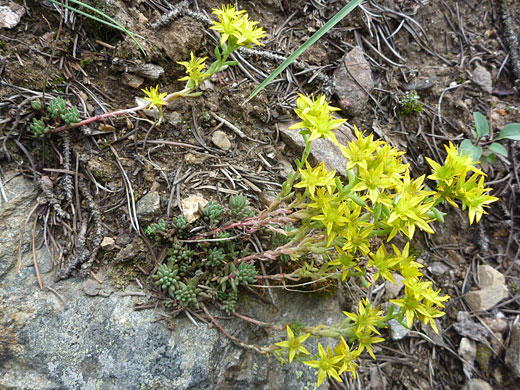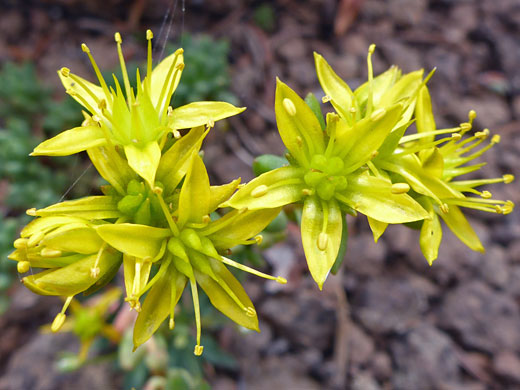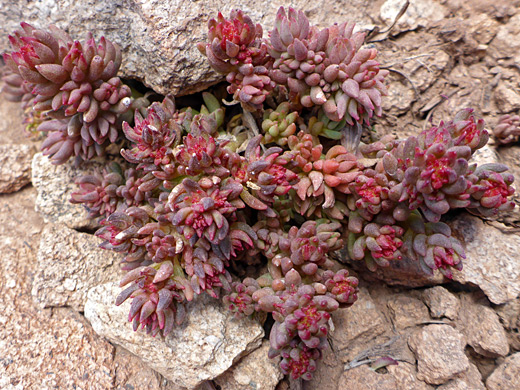Common names:
Yellow stonecrop, lance-leaved stonecrop, spearleaf stonecrop
Family:
Scientific name:
Sedum lanceolatum
Synonym:
Amerosedum lanceolatum
Main flower color:
Range:
From the Pacific states to the Rocky Mountains and the western Great Plains
Height:
Up to 7 inches
Habitat:
Open, rocky, dry locations in mountainous areas, up to 13,000 feet
Leaves:
Succulent; narrowly lanceolate to elliptic, about 0.3 inches long, with blunt tips
Season:
June to August
Leaves of sedum lanceolatum are small, narrow and succulent, circular in cross-section with blunt-pointed tips; they grow in tight basal clusters and at alternate intervals along the reddish stems, which branch towards the top to form a densely-packed, flat-topped inflorescence, containing between 3 and 24 heads. Stem leaves point upwards, are smaller than those at the base, and tend to wither by the time flowering begins. Basal leaves turn red late in the season.
Individual flowers have five narrow, lance-shaped, pointed-tipped petals and a ring of protruding stamens. Most flower parts are greenish-yellow in color, though the petals often have a red line on the outside, along the central rib. At the center of the flower is a five-lobed ovary, which transforms into reddish fruit in the fall.
Individual flowers have five narrow, lance-shaped, pointed-tipped petals and a ring of protruding stamens. Most flower parts are greenish-yellow in color, though the petals often have a red line on the outside, along the central rib. At the center of the flower is a five-lobed ovary, which transforms into reddish fruit in the fall.
All Contents © Copyright The American Southwest | Comments and Questions | Contribute | Site Map










